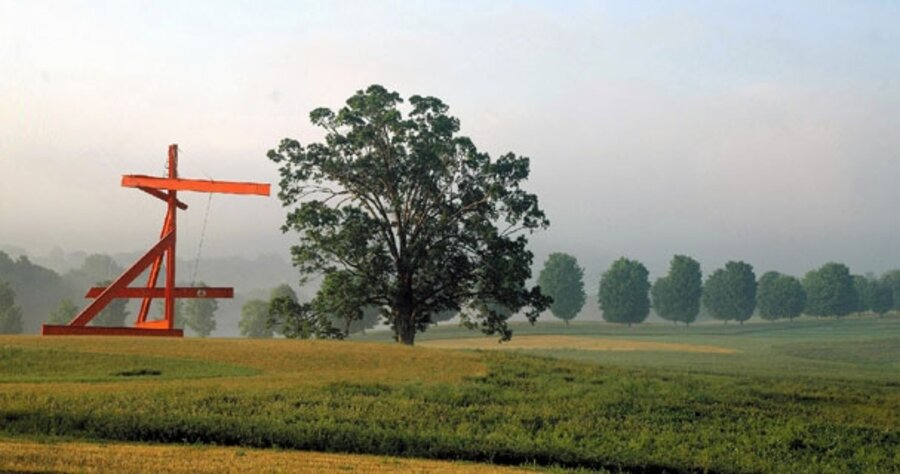From gravel pit to inspired landscape
Loading...
Storm King Art Center draws on a heritage rich with artistic and agricultural traditions. Comprising 500 acres of former farmland in the Hudson River highlands of Orange County, near Newburgh, N.Y., the center takes its name from Storm King Mountain, with an elevation close to 1,400 feet.
The tree-lined peaks and sloping ravines were first captured on canvas by a group of 19th-century painters who came to be known as the Hudson River School.
Later, Winslow Homer, who summered nearby, made watercolors of Schunnemunk Mountain. The area retains its primeval feel along with the spectacular cloudscapes that so often captivated those painters.
In the early 1960s, Storm King’s founders hired landscape architect William Rutherford of Greenwich, Conn., to repair the damage leftover from gravel quarrying and stitch the landscape back into its pastoral setting.
“The property was in poor condition,” says David Collens, director of Storm King. The quarrying “had left a cliff with pools of water below.”
Rutherford, who passed away in 2005, had a special fondness for Storm King. He was a self-effacing man with little interest in splashing his name all over the project, Mr. Collens says. “He wanted people to think that God had made the landscape.”
Rutherford designed the landscape to radiate outward from the hilltop where the original house is sited. He brought in tons of gravel to restore the hill’s slope.
Rather than blocking the distant highway view, he screened it with trees. When paths between the sculptures were called for, he responded by telling the mowing crew to create broad, 60- to 80-foot-wide strips to preserve the large scale.
Rutherford’s vision included large swaths of open space, both to display the art to full advantage and to maintain the open fields that even then were coming under siege by forest.
Because of the property’s size, mowing became more like a farming operation. Clearly, a more environmentally sound and aesthetically pleasing solution was needed.
So in the mid-’90s Rutherford identified areas totaling about 80 acres where taller vegetation could be planted, says Darrel Morrison, an expert on native grasses who collaborated with Rutherford.
Ornamental grasses work in a big-scale landscape “because they have a relatively uniform, fine texture that doesn’t call attention to itself,” says Mr. Morrison. If chosen well and planted in the right environment, they don’t require irrigation and fertilizer.
One of the mainstays is switch grass (Panicum virgatum), which adapts well to the poorly drained conditions in the area and whose scale complements the large sculptures, he says.
For drier areas, Morrison relies on little bluestem (Schizachyrium scoparium) and Indiangrass (Sorghastrum nutans).
The grasses, once established, require only a yearly mowing or burning.
Morrison says the real challenge is keeping invasive exotic species such as purple loosestrife at bay. The annual controlled burning invigorates the grasses while slowing or eliminating the loosestrife.
Planting areas with crops such as oats, alfalfa, buckwheat, and millet also can sometimes serve as placeholders and soil enrichment until those areas can be converted to grasses.
Rutherford was ahead of the curve in designing with grasses, which today can be seen in almost every type of landscape. But the contrast that grasses provide to the other structural elements at Storm King – lawn, shrubs, and trees – is inspired.
It’s as if he took account of each delicate, reedy texture of the grasses and balanced it against the tensile strength of the steel sculptures.
If one goal of good landscape design is to evoke nature but take it one step further, Rutherford has achieved this and more.
His design for Storm King weaves sculpture and landscape together into a harmonious whole. Like the sturdy maples and oaks that border the fields, the landscape looks as though it has always been there.
NOTE: This is the second article in a two-part series. See the first article here.





